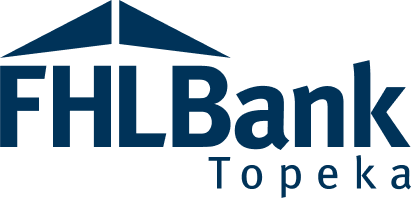INITIAL MONITORING CONTINUED
RENTAL PROJECT MONITORING CONTINUED
During the IM process, the project is reviewed for compliance of three categories
1. TENANT FILES
- Income Targeting
- The tenants’ incomes must fall within the Area Median Income (AMI) percentages agreed to in the AHP Agreement or most recent modification, if applicable.
- The Rental Project Report (RPR) worksheet lists all tenants and income information
- Income reported can be from initial certification when the tenant moved in or, if the tenant’s income was recertified in the past three years, the recertification income can be used.
- Refer to FHLBank Topeka’s Income Calculation Guidelines for instruction on how to calculate income. Other organization’s (such as HUD or USDA) calculate income differently, and the AHP calculation method must be used.
- Rent Affordability
- The current rent charged to the tenant’s must be below the maximum allowable
- Rents cannot exceed 30 percent of the income of a household of the maximum income and size expected to occupy the unit (assuming occupancy of 1.5 persons per bedroom or 1.0 persons per unit without a separate bedroom).
- The maximum affordable rent is listed on the RPR
- Randomly Selected Tenants
- A percentage of the tenants listed on the RPR will be randomly selected for targeting and affordability verification
- The Project must submit documentation that verifies the tenant’s income and rent
2. COMMITMENTS
- Verification of scoring commitments agreed to in the AHP Agreement or most recent modification, if applicable
- Documentation requirements to verify commitments will be provided to the Project within six months after notification of project completion
- Documentation must be submitted to FHLBank within one year of notification of project completion
- For tenant specific commitments, such as special needs or homeless, a random sample will be selected to verify
- Documentation must show commitments were completed
3. FEASIBILITY
- Feasibility Workbook
- Reflects final sources and uses
- Includes rents actually charged during lease up
- Operating projections, as reflected in the housing pro forma, are based on actual performance
- Project must demonstrate it has a need for the subsidy
- Costs are validated with a third party cost certification
- Sources are validated with documentation from the financer
- If the Project committed to financing at application (such as Deferred Developer Fee or Owner Equity), a similar amount was actually provided at project completion
- Operating Financials do not project a large increase in cumulative cash flow over the fifteen-year retention period from projections made at application
- Project must demonstrate it is viable
- Revenue is sufficient to cover expenses, reserves, and debt payments
- Cash flow is positive
- Reserves are adequate
- Documentation that shows the AHP funds were transferred from the Member to the Project
- Final Retention documentation, including the Recorded Deed or Mortgage
If the Project will be monitored by a tax credit allocating agency, monitoring requirements are satisfied with Initial Monitoring. Projects that did not receive Low Income Housing Tax Credits (LIHTC) will be monitored on an annual basis with tenant files due on a set schedule. This is referred to as Long Term Monitoring (LTM). For information on the LTM process, click here.
